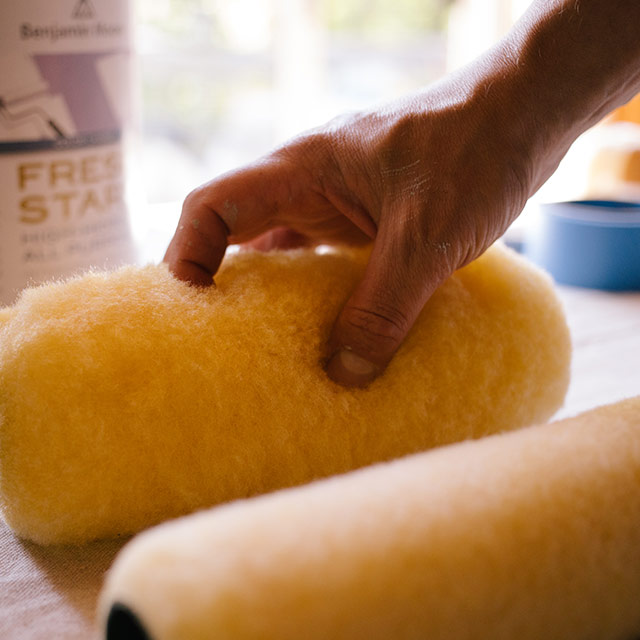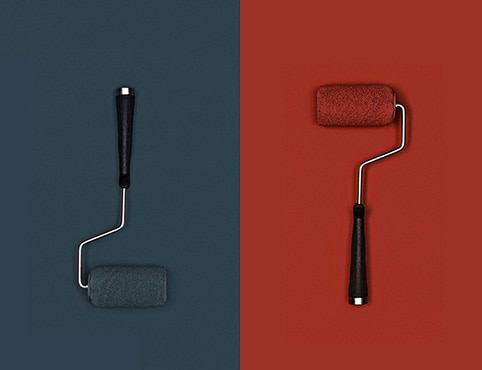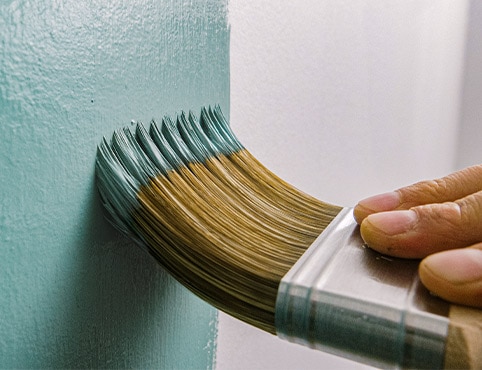How to Choose the Best Paint Roller Cover for Your Project
Select the best quality paint roller cover for your next project for first-rate results.

After carefully selecting the perfect color and paint for your project, don’t let all that effort go to waste by using a subpar paint roller.
Paint rollers are ideal for covering large, flat surfaces quickly and efficiently, making them an essential tool for most painting projects. Choosing the right roller cover is crucial for achieving the best results.
This guide will help you identify the best paint roller cover based on the material, size, and nap thickness. With the proper roller, you can complete your project faster and more evenly.
Step by Step: Choosing the Best Paint Roller Cover
Step 1: Know the Different Types of Paint Roller Covers
When it comes to fabric, there are two basic types: woven and knitted. If a flawless finish is your top priority, woven roller covers are ideal—they prevent lint and deliver a smooth, high-quality result. For projects where speed and coverage are key, however, knitted roller covers are a better choice, as they hold more paint and cover larger areas efficiently.
Here are a few of the Benjamin Moore roller covers you might find at your locally owned store:
- Aura® – Made of woven fabric for a shed-resistant finish on smooth, semi-smooth, and semi-rough surfaces. Designed for maximum pickup and release, and crafted to work best with a high-quality paint like its namesake, Aura.
- High Capacity – Constructed of knit fabric that resists matting. Designed for low-sheen paints, stains, and primers. A heavy-duty polypropylene core withstands water and solvents.
- Microfiber – A microfiber blend is designed for high capacity and smooth, consistent paint release. Use with all paints, stains, and urethanes.


Step 2: Choose the Best Paint Roller Cover Size
Paint roller covers come in several sizes for application on a range of project areas. For large surfaces, opt for a standard- or professional-size roller to cover more area quickly, while a medium or mini roller is better suited for precision work around edges and tight spaces.
Choose a roller cover that matches your project’s scope—and keep a paintbrush handy for those detailed finishing touches.
Here are some project guidelines when choosing a roller size:
- Walls, Ceilings, Flat Doors – Use a standard-size 9-in. (230 mm) roller.
- Small Furnishings, Paneled Cabinet Doors, Wide Trim, Narrow or Tight Surfaces, Edges, Frames, Handrails – Use a medium-size 4-in. (100 mm) roller.
Helpful Tip
Before using a new roller, wrap painter’s tape around the palm of your hand, sticky side out. Rub the tape along the roller to remove excess lint.

Step 3: Understand Nap Thickness
Nap is the thickness of the fibers on the roller cover, also known as “pile.” The more texture your surface has, the thicker the nap should be.
Here are some examples of nap thickness and best-suited projects:
- 1/4 in. – For smooth surfaces like metal doors, trim, and cabinet doors
- 3/8 in. – Best for walls and ceilings
- 1/2 in. – For semi-rough surfaces like textured ceilings, walls, decks, and concrete
- 3/4 in. - Use on textured ceilings, stucco, and masonry
- 1 in. to 1-1/4 in. - Best for brick and masonry block
Helpful Tip
While painting, if you see little dimples on your wall—think orange peel—consider switching to a roller cover with a thinner nap.Step 4: Select a Paint Roller Cover Frame
You’ll need the proper frame for your roller cover. Prioritize high-quality frames, as they’re built with rigid construction for durability and often feature threaded handles that are compatible with extension poles, making it easy to reach high or hard-to-access areas. Many quality frames also include endcap springs, which keep the roller cover securely in place during use.
A comfortable grip handle is essential for minimizing strain during extended painting sessions, making it easier to maintain control and precision. With an ergonomic handle, you can work longer and more comfortably.
Have questions? Your locally owned Benjamin Moore store can offer more advice on choosing paint roller covers and frames and explain how to use them.
Frequently Asked Questions
Q. What type of paint roller cover gives the smoothest finish?
A. If a smooth finish is your top priority, choose a woven roller cover, like Benjamin Moore’s Aura® roller cover. It’s shed-resistant and best for smooth, semi-smooth, and semi-rough surfaces. It provides maximum pickup and release and is ideal for use with Aura® paint.
Q. Which roller cover holds more paint?
A. Microfiber paint roller covers hold the most paint so you can cover more of the surface with fewer trips to the tray. In fact, microfiber paint roller covers hold up to three times more paint than a standard roller cover.
Q. Are paint roller covers reusable?
A. Yes, quality roller covers should last up to five uses before shedding. Extend the life of your paint roller cover by following these three steps:
Q. What are the best paint rollers for ceilings?
A. Paint rollers are perfect for covering large, flat surfaces like ceilings quickly and efficiently. It’s best to use a professional- or standard-size 9-inch (230 mm) roller for the job. Generally, the more texture your surface has, the thicker the nap should be. A 3/8 inch nap is best for most ceilings.
Q. How do you determine the quality of a paint roller cover?
A. When evaluating paint roller covers, opt for a quality roller cover that has beveled edges, no visible seams, a plastic core, and visible bounce-back when squeezed. Choose quality over cost savings: Inexpensive rollers tend to shed fibers and break down after repeated washing. While a high-quality roller cover may come with a slightly higher price tag, it lasts longer and delivers better results with proper care.




